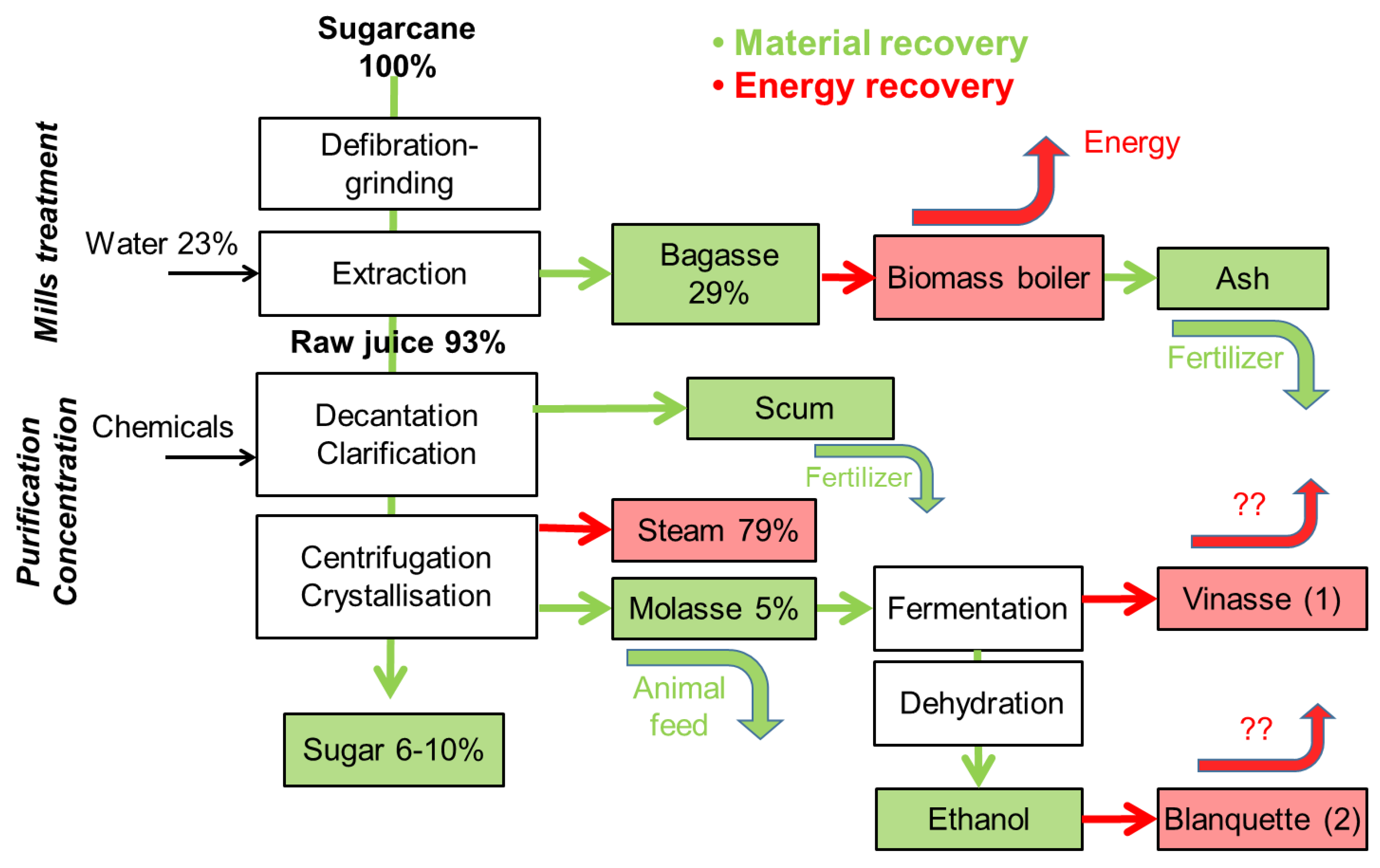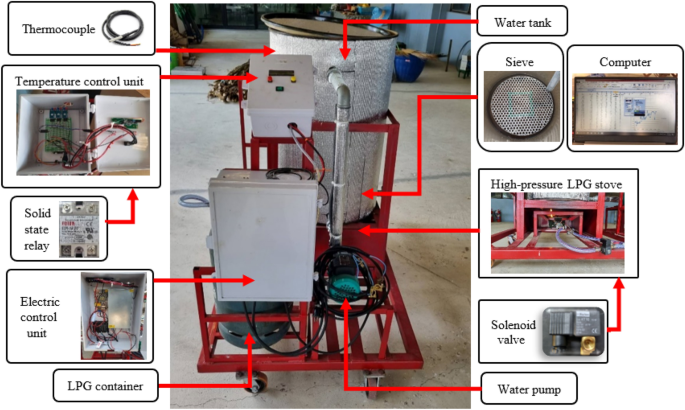What Governments Are Doing to Promote Products From Sugarcane
What Governments Are Doing to Promote Products From Sugarcane
Blog Article
Discover the Cutting-edge Advantages of Products From Sugarcane for Sustainable Living
Sugarcane has become a crucial resource in the quest for lasting living. Its varied applications span biodegradable packaging, renewable resource, and healthier food alternatives. As markets look for green options, sugarcane's flexibility uses promising remedies. The true potential of sugarcane prolongs beyond its current usages. Discovering its cutting-edge benefits can reveal brand-new paths towards a more sustainable future. What various other opportunities might this impressive plant hold?

The Surge of Sugarcane as a Sustainable Source
As worldwide awareness of environmental issues expands, sugarcane has become a noticeable lasting resource. This versatile crop uses an array of advantages that add to eco-friendly practices. Sugarcane is a renewable energy, with the ability of growing in varied environments while taking in co2, thus alleviating greenhouse gas exhausts. Its rapid development cycle enables constant harvesting, causing a constant supply of raw material.Additionally, sugarcane farming typically needs less water contrasted to other crops, making it an efficient choice in water-scarce areas. The by-products of sugarcane, such as bagasse and molasses, can be repurposed for different applications, minimizing waste and promoting round economic situation principles. Innovations in farming methods have led to more sustainable farming methods, additionally enhancing sugarcane's environmental account. As customers increasingly seek lasting options, sugarcane stands apart as a practical option for those dedicated to reducing their ecological footprint.
Naturally Degradable Packaging Solutions
How can biodegradable packaging services transform the method consumers approach sustainability? By using sugarcane-based products, these ingenious services offer an engaging option to standard plastics. Biodegradable packaging made from sugarcane disintegrates naturally, considerably minimizing garbage dump waste and greenhouse gas exhausts. As customers end up being significantly knowledgeable about their ecological effect, the need for lasting packaging proceeds to rise.These sugarcane-derived products not just offer useful objectives yet also align with eco-conscious consumer values. They give a tangible means for companies and individuals to contribute to a round economic situation, advertising resource performance and reducing environmental footprints. Furthermore, as sectors adopt naturally degradable choices, they cultivate a culture of sustainability that reverberates with an expanding market looking for liable choices.In significance, biodegradable packaging remedies from sugarcane stand for an essential advance in sustainable practices, equipping consumers to make ecologically friendly choices without compromising ease or top quality.
Renewable Power Generation From Sugarcane
A considerable part of renewable resource generation can be originated from sugarcane, showcasing its flexibility beyond typical agricultural usages. Sugarcane biomass, including bagasse and leaves, is a potent source for bioenergy production. This biomass can be exchanged biofuels such as ethanol, which functions as a cleaner choice to nonrenewable fuel sources. Furthermore, the burning of sugarcane byproducts produces vapor and electrical power, offering an energy source for sugar mills and close-by communities.The farming of sugarcane additionally adds to carbon sequestration, as the plants soak up co2 during their development cycle. By utilizing sugarcane for energy, waste is minimized, and sustainable techniques are encouraged. This eco-friendly energy technique not only sustains power demands however also promotes country advancement, creating tasks in bioenergy sectors. In general, sugarcane stands out as a principal in the shift to sustainable energy remedies, lining up with worldwide efforts to reduce carbon impacts.

Eco-Friendly Textiles and Fabrics
Environmentally friendly fabrics and materials derived from sugarcane provide an encouraging alternative to traditional materials. These biodegradable alternatives not just lower ecological effect however likewise supply longevity and efficiency comparable to traditional fabrics. Lasting production processes even more enhance their allure, making them an essential component of a lasting way of life.
Eco-friendly Fabric Options
Why is the adjustment towards naturally degradable fabric alternatives crucial for lasting living? The boosting awareness of environmental destruction has actually triggered a look for choices to traditional textiles, which usually add to contamination and waste. Eco-friendly materials, acquired from sustainable sources such as sugarcane, use a promising remedy. These materials decay naturally, reducing land fill build-up and minimizing ecological influence. In addition, they can aid reduced carbon footprints and dependence on nonrenewable fuel sources. As consumers come to be a lot more eco-conscious, the demand for sustainable fabrics grows, motivating suppliers to spend and introduce in eco-friendly alternatives. This adjustment not only sustains lasting techniques however additionally fosters a round economy, leading the way for a much more accountable method to fashion and textile manufacturing.
Toughness and Efficiency
When examining environment-friendly textiles and textiles, resilience and performance are important elements. Sugarcane-derived products show remarkable strength and strength, making them ideal for different applications. These textiles commonly exhibit exceptional moisture-wicking homes, which boost convenience in day-to-day wear. Additionally, their natural fibers contribute to breathability, making sure that garments continue to be fresh and wearable even in requiring problems. The efficiency of sugarcane-based textiles encompasses their resistance to tear and use, enabling items to maintain their honesty in time. These environment-friendly textiles can be treated to improve UV protection and tarnish resistance, fulfilling the functional requirements of consumers without jeopardizing sustainability. Eventually, sugarcane fabrics supply a harmonious equilibrium of durability and efficiency, interesting eco aware people.
Lasting Production Processes
The excellent longevity and performance of sugarcane-derived fabrics are matched by lasting production procedures that browse this site prioritize ecological responsibility. These processes utilize eco-friendly sources, reducing dependence on fossil fuels and lowering carbon footprints. By using the byproducts of sugarcane growing, producers can create environment-friendly fabrics while advertising waste decrease. Advanced methods, such visite site as water-efficient dyeing and biodegradable therapies, even more improve the sustainability of these textiles. Additionally, the use of non-toxic chemicals assurances that the production procedure does not hurt ecological communities or human wellness. This commitment to sustainability not just charms to eco mindful customers however also supports local economies by promoting lasting agricultural techniques. On the whole, sugarcane-derived fabrics represent a significant action towards a greener future in the apparel industry.
Sugarcane-Based Biofuels and Their Effect

Sugarcane-based biofuels have become a substantial alternate energy source, supplying a sustainable remedy to the world's growing power demands. These biofuels, stemmed from the fermentation of sugarcane juice or molasses, provide a more sustainable choice contrasted to nonrenewable fuel sources. Their manufacturing process produces reduced greenhouse gas exhausts, adding to environment adjustment reduction efforts.Additionally, sugarcane biofuels can enhance energy safety by branching out energy sources and lowering dependence on imported oil. The growing of sugarcane additionally promotes rural development, creating work and promoting neighborhood economies.However, concerns concerning land use and food competition linger, as enhanced biofuel production might affect food supply chains. Lasting farming methods are important to balancing these competing passions and making certain that biofuel production does not threaten food safety. Generally, sugarcane-based biofuels stand for a promising opportunity for a greener energy future, provided that their environmental and social implications are carefully handled.
Much Healthier Alternatives: Sugarcane in Food Products
While numerous customers seek healthier choices in their diets, sugarcane items provide a healthy option to improved sugars and sweetening agents. Stemmed from the natural removal of sugarcane juice, these products preserve necessary nutrients, consisting of minerals and vitamins, that are commonly lost in processed sugars. Sugarcane consists of antioxidants and dietary fiber, contributing to general health and wellness and wellness.Many health-conscious individuals are transforming to sugarcane syrup and jaggery, which supply a lower glycemic index contrasted to standard sugars, making them ideal for those handling blood glucose levels. Furthermore, sugarcane-derived sweeteners can boost the taste of numerous meals without the adverse effects connected with man-made additives.This shift in the direction of all-natural artificial sweetener not just advertises better nutritional options but also aligns with sustainable living practices, as sugarcane is a renewable energy. Sugarcane products are arising as positive options in the domain of food products.
The Future of Sugarcane in Sustainable Advancements
The future of sugarcane is positioned to encompass cutting-edge applications that expand past conventional uses. Its possible as a source for eco-friendly packaging services and eco-friendly power resources highlights its duty in sustainable methods. Checking out these advancements can considerably impact ecological conservation and resource administration.
Biodegradable Packaging Solutions
A boosting number of companies are transforming to biodegradable product packaging remedies originated from sugarcane as an encouraging choice to conventional plastics. These cutting-edge products, typically made from sugarcane fibers and bioplastics, decay naturally, reducing the resilient environmental influence connected with standard plastic waste. By using sustainable resources, sugarcane-based product packaging adds to a much more sustainable production cycle, aligning with global efforts to deal with air pollution and climate modification. In addition, these solutions usually maintain the sturdiness and capability required for numerous applications, from food containers to delivery materials. As customer demand for environmentally friendly alternatives grows, businesses embracing sugarcane product packaging not just enhance their brand name photo however also play a critical function in cultivating a round economy, paving the means for a greener future.
Renewable Energy Sources
Eco-friendly product packaging remedies are simply one element of the wider possibility of sugarcane in advertising sustainability. An additional substantial application lies in renewable energy sources. Sugarcane is a flexible plant that can be utilized to generate biofuels, such as ethanol, which works as a cleaner choice to nonrenewable fuel sources. The fermentation procedure of sugarcane juice yields ethanol that can power lorries and produce electricity. Furthermore, the by-products of sugarcane processing, like bagasse, can be used to generate biomass energy, providing a lasting and effective technique to harness energy. This twin role as both a source of biofuel and biomass highlights sugarcane's capacity in minimizing carbon emissions and supporting a shift to a much more sustainable power landscape in the future.
Frequently Asked Inquiries
Just How Is Sugarcane Harvested Sustainably?
Sugarcane harvesting can be sustainable through strategies like manual cutting, which decreases soil disturbance, and making use of equipment that minimizes fuel intake (Products From Sugarcane). Crop rotation and integrated pest administration better improve environmental health and advertise long-term soil fertility
What Are the Environmental Influences of Sugarcane Farming?

Can Sugarcane Products Be Recycled?
The question of whether sugarcane products can be recycled reveals a positive overview. Lots great post to read of sugarcane-derived materials, such as bioplastics and product packaging, are designed for recyclability, adding to a more sustainable waste management strategy within environmental considerations.
Are There Any Type Of Downsides to Using Sugarcane-Based Products?
The disadvantages of utilizing sugarcane-based products consist of potential land use competitors with food plants, difficulties in large manufacturing, and issues regarding the ecological effect of monoculture farming practices, which can diminish biodiversity and dirt health and wellness.
Just How Does Sugarcane Farming Affect Citizen Communities?
Sugarcane growing impacts neighborhood areas by supplying employment possibility and increasing local economies. Nonetheless, it can likewise result in land disagreements and ecological concerns, influencing farming practices and neighborhood health and wellness, requiring a well balanced strategy to growth. Innovations in agricultural methods have led to more lasting farming techniques, even more boosting sugarcane's ecological profile. In addition, the combustion of sugarcane results generates heavy steam and electrical energy, supplying a power source for sugar mills and close-by communities.The cultivation of sugarcane likewise contributes to carbon sequestration, as the plants absorb carbon dioxide throughout their growth cycle. By using sugarcane for energy, waste is minimized, and sustainable practices are urged - Products From Sugarcane. Sugarcane contains antioxidants and nutritional fiber, contributing to overall health and wellness.Many health-conscious people are turning to sugarcane syrup and jaggery, which provide a lower glycemic index compared to standard sugars, making them suitable for those handling blood sugar levels. Furthermore, the results of sugarcane processing, like bagasse, can be utilized to generate biomass energy, providing a effective and sustainable technique to harness power
Report this page